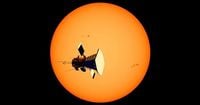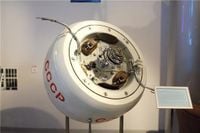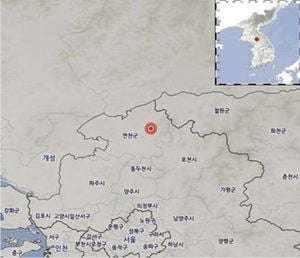A relic of Soviet technology, the spacecraft Kosmos 482 is poised to re-enter Earth’s atmosphere in an uncontrolled manner this weekend, leaving the global space community on edge. Originally launched over 50 years ago with the goal of exploring Venus, this probe has been unable to escape Earth’s orbit due to a technical failure, and now experts are closely monitoring its trajectory as it descends.
Kosmos 482 was launched by the Soviet Union on March 31, 1972, as part of the Venera program, with its intended destination being Venus. This mission, however, was doomed from the start due to an engine ignition failure that prevented the spacecraft from achieving the necessary interplanetary trajectory known as “transfer to Venus.” Instead, it remained in an elliptical orbit around the Earth, where it has lingered for decades.
According to CNN, when a Soviet object failed to leave low Earth orbit, it was designated as “Kosmos.” This nomenclature was also noted by Time, indicating the probe's status as a failed mission. Now, half a century later, the European Space Agency (ESA) predicts that Kosmos 482 will re-enter the atmosphere around 08:16 UTC (10:16 Spanish time) on Saturday, May 10, 2025, although this timing could vary by several hours.
Marco Langbroek, an orbit specialist, calculated the return of Kosmos 482 to occur between May 9 and May 11, 2025. The most recent forecast indicates that the event will occur on May 10 at 00:42 hours, with a margin of error of 19 hours. The speed of descent could reach up to 242 km/h, depending on atmospheric conditions at the time of entry.
Experts have noted that the spacecraft was designed to descend on Venus, where atmospheric pressure is 93 times greater than that of Earth, and temperatures exceed 860°F. Its structure includes a reinforced capsule, which, if it survives re-entry, could potentially withstand the stresses of Earth's atmosphere. Jonathan McDowell, quoted by CNN, explained that the capsule is equipped with a heat shield capable of enduring orbital friction, which could explain its prolonged presence in orbit.
However, the re-entry is classified as uncontrolled, and the system of parachutes originally intended to slow the descent is likely degraded after more than five decades in space. The risk of injury or damage to people on Earth is considered low, as the trajectory of the capsule could land anywhere between 51.7° north and south latitude, covering a significant portion of the inhabited world. This means it could potentially impact anywhere from the United Kingdom to the southern tip of South America.
As the re-entry draws near, various space authorities, including NASA and the ESA, as well as military forces from Spain and the United States, are closely monitoring the spacecraft's trajectory. They are prepared to inform the public urgently if necessary, aiming to minimize any potential risks associated with the spacecraft's descent.
Stijn Lemmens, a senior analyst for debris mitigation at the ESA, commented on the situation, stating, "It is much more likely that you will win the lottery than that this piece of space junk will hit you." This reflects the general consensus among experts that while the re-entry is a noteworthy event, the actual risk to individuals is minimal.
Despite the low risk, the potential for debris to fall on land remains a concern. The spacecraft has broken into four pieces, according to NASA. The landing module capsule is a robust spherical object approximately one meter wide and weighing nearly half a ton. Built to withstand the extreme heat and pressure of Venus's atmosphere, it features a durable structure and a robust heat shield.
As scientists and space agencies keep a vigilant watch, they are also preparing for the possibility that some fragments of Kosmos 482 may survive the descent. The latest estimates from the ESA suggest that the most likely landing area for any debris is in the Pacific Ocean, a region where the vast majority of space debris tends to fall.
While the re-entry of Kosmos 482 is a significant event, it serves as a reminder of the increasing frequency of uncontrolled re-entries of space objects into Earth’s atmosphere. Most of these objects, however, end up falling into the ocean, which covers approximately 70% of the Earth's surface. This fact greatly reduces the likelihood of any serious incidents occurring due to falling space debris.
As the world awaits the re-entry of Kosmos 482, it is a moment that highlights both the achievements and challenges of space exploration. The mission may have failed to reach its intended destination, but its long journey has provided valuable insights into the complexities of space travel and the potential hazards posed by defunct spacecraft.
In the end, the descent of Kosmos 482 is a fascinating chapter in the annals of space exploration, illustrating the enduring legacy of the Soviet space program and the ongoing need for vigilance as humanity continues to explore the cosmos.





